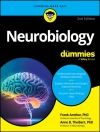Chemistry Essentials For Dummies (9781119591146) was previously published as Chemistry Essentials For Dummies (9780470618363). While this version features a new Dummies cover and design, the content is the same as the prior release and should not be considered a new or updated product.
Whether studying chemistry as part of a degree requirement or as part of a core curriculum, students will find Chemistry Essentials For Dummies to be an invaluable quick reference guide to the fundamentals of this often challenging course. Chemistry Essentials For Dummies contains content focused on key topics only, with discrete explanations of critical concepts taught in a typical two-semester high school chemistry class or a college level Chemistry I course, from bonds and reactions to acids, bases, and the mole. This guide is also a perfect reference for parents who need to review critical chemistry concepts as they help high school students with homework assignments, as well as for adult learners headed back into the classroom who just need to a refresher of the core concepts.
The Essentials For Dummies Series
Dummies is proud to present our new series, The Essentials For Dummies. Now students who are prepping for exams, preparing to study new material, or who just need a refresher can have a concise, easy-to-understand review guide that covers an entire course by concentrating solely on the most important concepts. From algebra and chemistry to grammar and Spanish, our expert authors focus on the skills students most need to succeed in a subject.
Table des matières
Introduction 1
About This Book 1
Conventions Used in This Book 2
Foolish Assumptions 2
Icons Used in This Book 3
Where to Go from Here 3
Chapter 1: Matter and Energy: Exploring the Stuff of Chemistry 5
Knowing the States of Matter and Their Changes 6
Solids, liquids, and gases 6
Condensing and freezing 7
Melting and boiling 8
Skipping liquids: Sublimation 9
Pure Substances and Mixtures 9
Pure substances 10
Throwing mixtures into the mix 11
Measuring Matter 12
Nice Properties You’ve Got There 13
Energy Types 14
Kinetic energy 14
Potential energy 15
Temperature and Heat 15
Chapter 2: What’s in an Atom? 17
Subatomic Particles 17
Centering on the Nucleus 19
Locating Those Electrons 21
The quantum mechanical model 21
Energy level diagrams 26
Isotopes and Ions 30
Isotopes: Varying neutrons 31
Ions: Varying electrons 32
Chapter 3: The Periodic Table 35
Repeating Patterns: The Modern Periodic Table 35
Arranging Elements in the Periodic Table 38
Grouping metals, nonmetals, and metalloids 38
Arranging elements by families and periods 41
Chapter 4: Nuclear Chemistry 43
Seeing How the Atom’s Put Together 43
Dealing with a Nuclear Breakup: Balancing Reactions 44
Understanding Types of Natural Radioactive Decay 46
Alpha emission 47
Beta emission 48
Gamma emission 48
Positron emission 48
Electron capture 49
Half-Lives and Radioactive Dating 49
Calculating remaining radioactivity 50
Radioactive dating 51
Breaking Elements Apart with Nuclear Fission 51
Mass defect: Where does all that energy come from? 52
Chain reactions and critical mass 52
Coming Together with Nuclear Fusion 53
Chapter 5: Ionic Bonding 55
Forming Ions: Making Satisfying Electron Trades 55
Gaining and losing electrons 56
Looking at charges on single-atom ions 58
Grouping atoms to form polyatomic ions 61
Creating Ionic Compounds 63
Making the bond: Sodium metal + chlorine gas = sodium chloride 63
Figuring out the formulas of ionic compounds 64
Naming ionic compounds 66
Bonding Clues: Electrolytes and Nonelectrolytes 68
Chapter 6: Covalent Bonding 69
Covalent Bond Basics 69
Sharing electrons: A hydrogen example 69
Comparing covalent bonds with other bonds 71
Dealing with multiple bonds 72
Naming Covalent Compounds Made of Two Elements 73
Writing Covalent Compound Formulas 74
Empirical formulas 74
Molecular or true formulas 75
Structural formulas: Dots and dashes 75
Electronegativities: Which Atoms Have More Pull? 81
Predicting the type of bond 81
Polar covalent bonding: Creating partial charges 83
Attracting other molecules: Intermolecular forces 84
Chapter 7: Chemical Reactions 87
Reactants and Products: Reading Chemical Equations 87
Collision Theory: How Reactions Occur 88
Hitting the right spot 89
Adding, releasing, and absorbing energy 90
Types of Reactions 92
Combination reactions: Coming together 92
Decomposition reactions: Breaking down 93
Single displacement reactions: Kicking out another element 93
Double displacement reactions: Trading places 95
Combustion reactions: Burning 97
Redox reactions: Exchanging electrons 97
Balancing Chemical Equations 97
Balancing the Haber process 98
Balancing the burning of butane 99
Knowing Chemical Equilibrium Backward and Forward 100
Matching rates of change in the Haber process 101
Constants: Comparing amounts of products and reactants 102
Le Chatelier’s Principle: Getting More (or Less) Product 103
Changing the concentration 103
Changing the temperature 104
Changing the pressure 104
Chemical Kinetics: Changing Reaction Speeds 105
Seeing How Catalysts Speed Up Reactions 107
Heterogeneous catalysis: Giving reactants a better target 108
Homogeneous catalysis: Offering an easier path 108
Chapter 8: Electrochemistry: Using Electrons 111
Transferring Electrons with Redox Reactions 111
Oxidation 112
Reduction 113
One’s loss is the other’s gain 114
Oxidation numbers 115
Balancing Redox Equations 116
Exploring Electrochemical Cells 120
Galvanic cells: Getting electricity from chemical reactions 121
Electrolytic cells: Getting chemical reactions from electricity 122
Having it both ways with rechargeable batteries 123
Chapter 9: Measuring Substances with the Mole 125
Counting by Weighing 125
Moles: Putting Avogadro’s Number to Good Use 127
Defining the mole 127
Calculating weight, particles, and moles 128
Finding formulas of compounds 129
Chemical Reactions and Moles 130
Reaction stoichiometry 131
Percent yield 132
Limiting reactants 133
Chapter 10: A Salute to Solutions 135
Mixing Things Up with Solutes, Solvents, and Solutions 135
How dissolving happens 136
Concentration limits 136
Saturated facts 137
Understanding Solution Concentration Units 138
Percent composition 138
Molarity: Comparing solute to solution 140
Molality: Comparing solute to solvent 143
Parts per million 143
Chapter 11: Acids and Bases 145
Observing Properties of Acids and Bases 145
The Brønsted-Lowry Acid-Base Theory 146
Understanding Strong and Weak Acids and Bases 147
Strong: Ionizing all the way 147
Weak: Ionizing partially 149
Acid-Base Reactions: Using the Brønsted-Lowry System 151
Acting as either an acid or base: Amphoteric water 152
Showing True Colors with Acid-Base Indicators 153
Doing a quick color test with litmus paper 153
Phenolphthalein: Finding concentration with titration 154
Phun with the p H Scale 155
Chapter 12: Clearing the Air on Gases 159
The Kinetic Molecular Theory: Assuming Things about Gases 159
Relating Physical Properties with Gas Laws 162
Boyle’s Law: Pressure and volume 163
Charles’s Law: Volume and temperature 164
Gay-Lussac’s Law: Pressure and temperature 165
The combined gas law: Pressure, volume, and temp 166
Avogadro’s Law: The amount of gas 167
The ideal gas equation: Putting it all together 168
Chapter 13: Ten Serendipitous Discoveries in Chemistry 171
Archimedes: Streaking Around 171
Vulcanization of Rubber 172
Molecular Geometry 172
Mauve Dye 172
Kekulé: The Beautiful Dreamer 173
Discovering Radioactivity 173
Finding Really Slick Stuff: Teflon 173
Stick ’Em Up! Sticky Notes 174
Growing Hair 174
Sweeter than Sugar 174
Index 175
A propos de l’auteur
John T. Moore, Ed D, is Regents Professor of Chemistry Emeritus and Coordinator of STEM Activities at Stephen F. Austin State University. He is the author of Chemistry For Dummies and coauthor of Biochemistry For Dummies.












